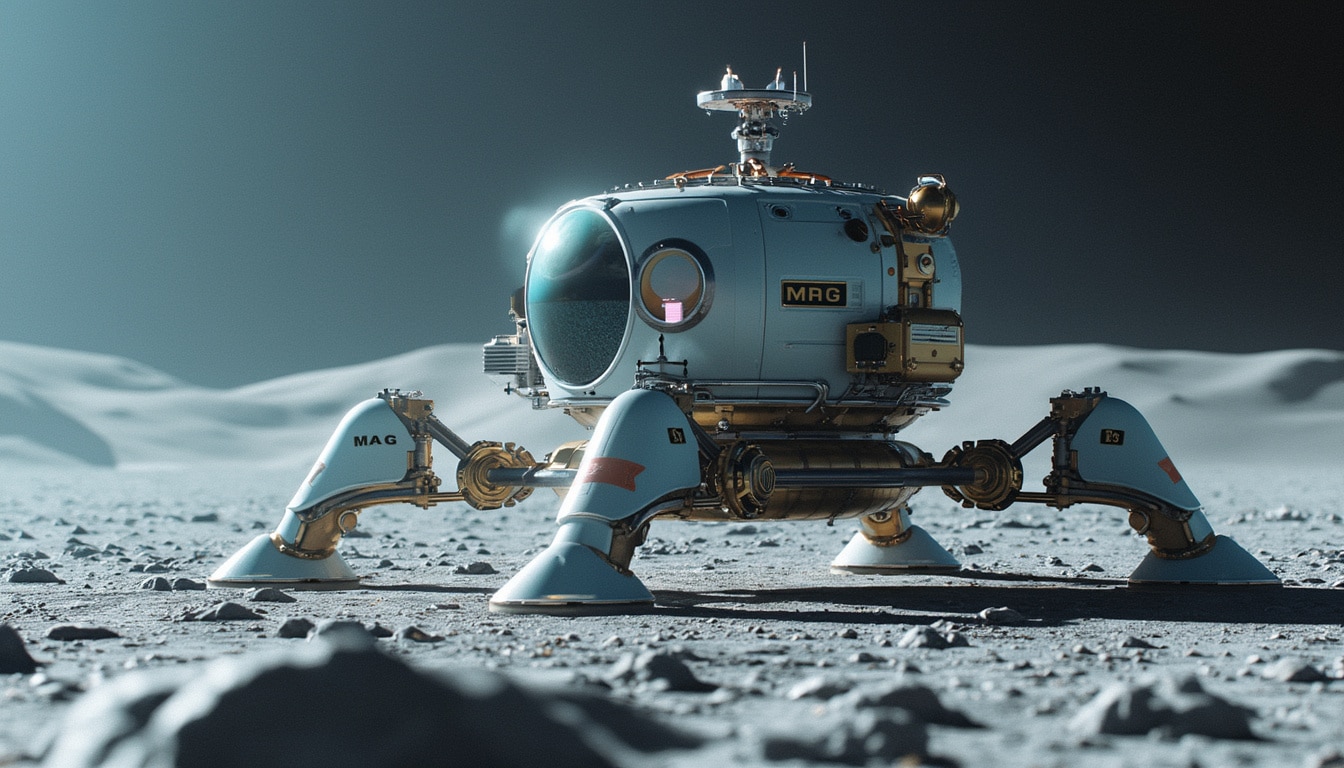The achievement of NASA’s Lunar GNSS Receiver Experiment (LuGRE) represents a groundbreaking leap in lunar navigation and space technology. On March 3, 2025, history was made as LuGRE successfully acquired and tracked GPS signals on the moon’s surface for the first time. This remarkable milestone has profound implications for future lunar exploration and missions to other celestial bodies like Mars. With operational capabilities on the lunar surface for the first time, the mission opens up new avenues for satellite communication and accurate navigation in space. As we delve deeper into this pivotal moment, it is clear that this success is just the beginning of what could be a new era in moon exploration.
Breaking New Ground in Lunar Navigation
NASA’s foray into lunar navigation marks a defining moment in the annals of space exploration. The LuGRE payload, a collaboration between NASA and the Italian Space Agency, demonstrated its capability to receive Earth-based navigation signals while on the lunar surface. This achievement was made possible by the Blue Ghost lander, which successfully delivered LuGRE to the moon after a historic landing.

Understanding the Lunar GNSS Receiver Experiment
LuGRE’s journey to the moon began with the landing of the Firefly Aerospace’s Blue Ghost lunar lander. On March 2, 2025, the lander touched down, paving the way for LuGRE’s deployment of a revolutionary navigation system. Designed to utilize GPS signal acquisition technology, LuGRE showcased its ability not only to acquire but also to track GNSS signals—specifically from GPS and Galileo networks. This capability allows for accurate positioning and time determination while operating on the lunar surface, which is critical for the success of future lunar missions.
Prior to its successful operation on the moon, LuGRE had already set records during its ascent. On January 21, 2025, it achieved the highest altitude GNSS signal acquisition at 209,900 miles from Earth, surpassing the previous record held by NASA’s Magnetospheric Multiscale Mission. These achievements not only represent significant advancements in space technology but also reinforce the viability of navigation systems in cislunar space, the area between the Earth and the moon.
The Implications of LuGRE’s Success
With the successful acquisition and tracking of GPS signals on the moon, the implications for lunar navigation are extensive. Kevin Coggins, the deputy associate administrator for NASA’s Space Communications and Navigation (SCaN) program, remarked on the excitement surrounding this discovery, highlighting its potential to reduce reliance on human operators for navigation in space.
The successful demonstration of LuGRE can facilitate a more autonomous approach to lunar missions, where spacecraft can operate with minimal direct control from Earth-based operators. This paves the way for more sophisticated missions, such as lunar bases or manned expeditions to Mars. The capacity for cubesats and rovers to utilize GNSS signals translates to a far more efficient method of achieving precision in navigation and position-related tasks. Moon exploration is set to transform as these technological advancements unfold, enhancing the capabilities of upcoming lunar missions.
Future of Lunar and Mars Missions
The integration of GNSS signal acquisition into lunar operations can have a transformative effect on the future of moon exploration and the eventual exploration of Mars. As research continues to develop, the enhancements to navigation systems will aid in targeting not just lunar landings but also Martian explorations.

Setting the Stage for Mars Exploration
The advancements seen with LuGRE’s lunar operations will directly influence the next generation of Mars rovers. As we look to expand our understanding of the Martian landscape, NASA and its partners are aiming to implement similar GNSS technologies to provide essential navigation capabilities on the red planet.
The successful demonstration of using GPS signals on the moon can be a significant stepping stone. Missions that could involve human landing on Mars, for example, will greatly rely on autonomous navigation systems. Such systems could utilize satellite communication to enhance the operation of rovers and other lander missions, ensuring safe travel across extensive Martian terrain.
Collaborative Efforts and Global Partnerships
The LuGRE payload highlights the importance of collaborative efforts in space exploration. NASA’s partnership with the Italian Space Agency and industry partner Qascom showcases how global cooperation can drive innovation in space industry advancements. The success of such collaborative programs signifies the potential for future international endeavors on both the moon and Mars.
Building a Global Framework for Space Exploration
LuGRE exemplifies how a unified approach in developing space technology can yield unprecedented results. Global partnerships in exploration not only enhance the effectiveness of missions but also maximize resources and knowledge sharing. As nations continue to collaborate, the prospects for advancing lunar exploration heighten significantly.
As NASA endeavors to leverage the success of LuGRE, the findings and data collected from its operation will inform future strategy and development in lunar navigation systems. The lessons learned will undoubtedly be crucial as we prepare for the next steps in human and robotic exploration beyond our planet.
Scientific Research and Moon Exploration
The successful acquisition of GPS signals on the moon has opened new doors for lunar science. Missions no longer have to rely solely on earth-based navigation methods. Instead, with accurate data on positioning and timing provided by GNSS, lunar operations can enhance the scientific research conducted on the surface.
This data-driven approach also leads to enhanced exploration of lunar resources, which can be vital for sustaining human presence on the moon and potentially fueling missions further afield. As NASA and its partners continue to develop innovative navigation systems, the scientific community remains excited about the potential discoveries waiting to be found on the moon’s surface.
Additional Insights on Lunar GPS Innovations
As more data is analyzed and additional operations occur, it will be fascinating to observe how innovations in lunar navigation evolve. The engagement of different international and private organizations plays a significant role in further pushing the boundaries of what is technologically feasible.
| Milestone | Date Achieved | Significance |
|---|---|---|
| LuGRE successfully acquires GPS signals on the moon | March 3, 2025 | First time GNSS signals are utilized on the lunar surface |
| Highest altitude GNSS signal acquisition | January 21, 2025 | 209,900 miles from Earth |
| LuGRE reaches lunar orbit | February 20, 2025 | 243,000 miles from Earth |
Looking Forward: The Future of Space Navigation
The advancements made with LuGRE signify a growing understanding of lunar missions and their navigation challenges. What we have witnessed thus far is only the tip of the iceberg. As researchers and engineers work toward optimized technologies, the integration of GNSS navigation on the moon and beyond sets a promising precedent.
As this technology evolves, missions to Mars will undoubtedly see the benefits of lessons learned from operating on the moon. With GPS signal acquisition proving successful on lunar terrain, we anticipate its implementation can lead to efficient navigation systems across other planetary bodies.
The focal point remains centered on furthering human understanding of space and our capabilities for sustainable exploration. With this shared goal, the journey continues into the cosmos, inspired by these recent milestones achieved by NASA and its partners.




Leave a Reply